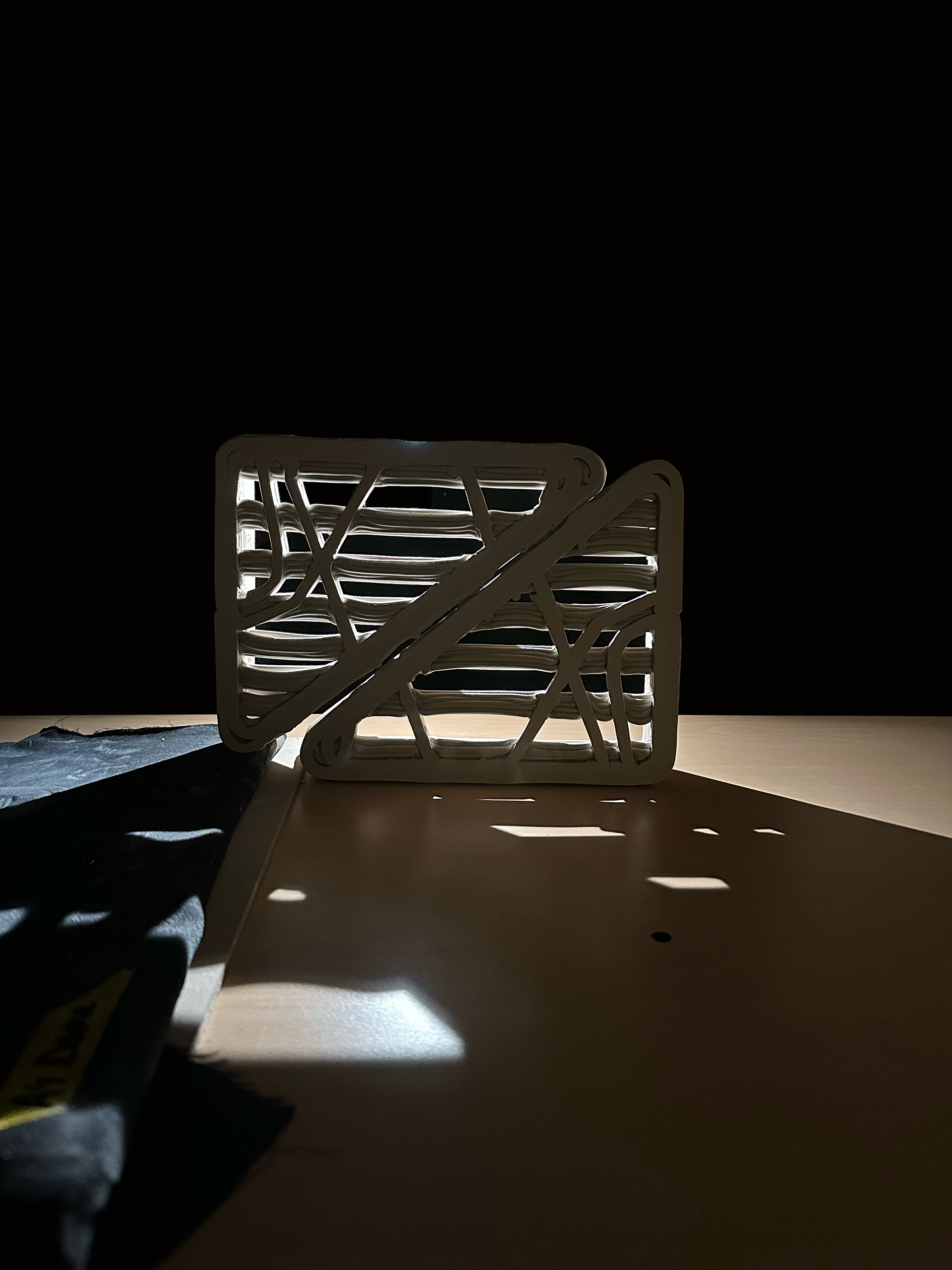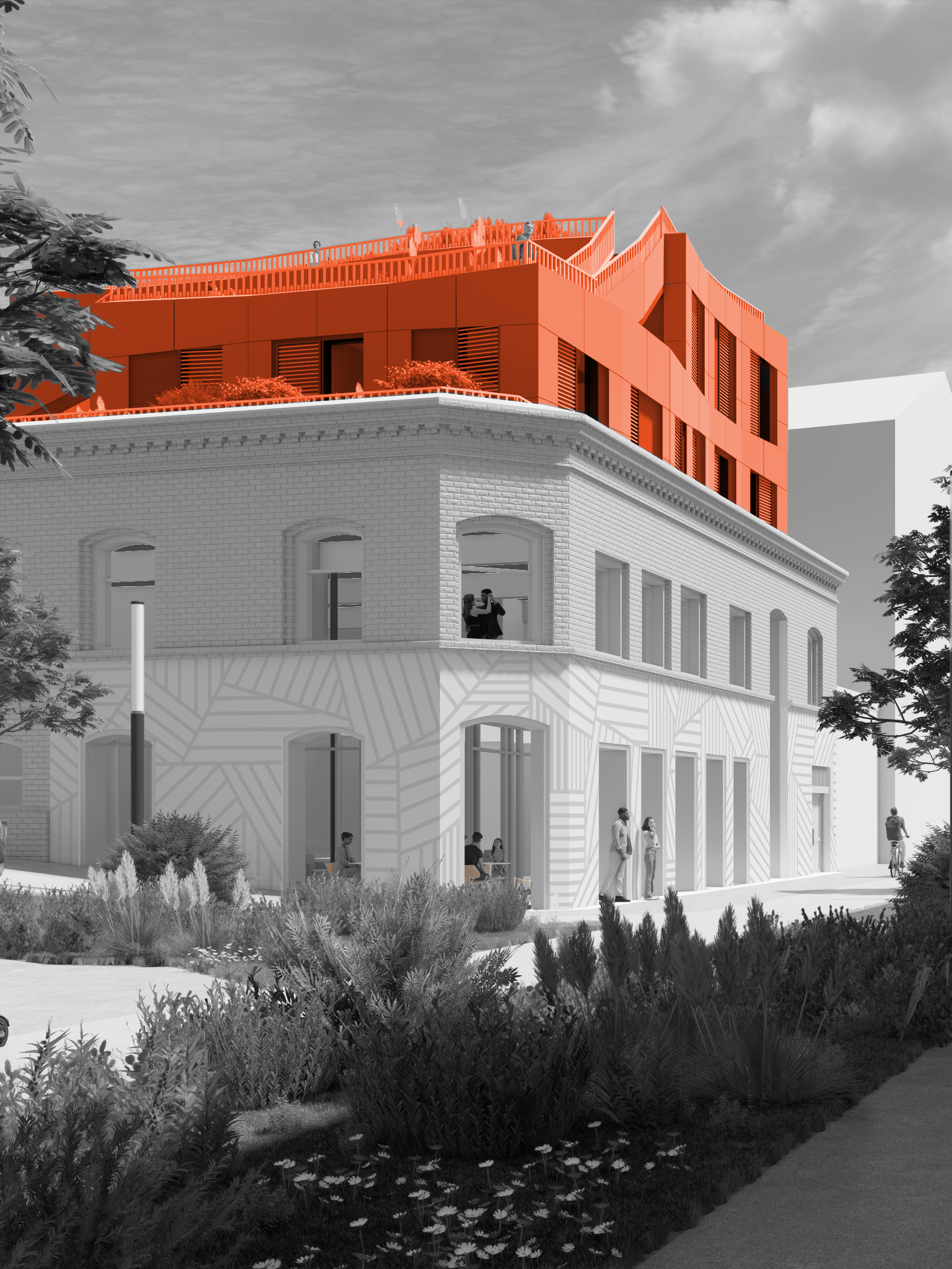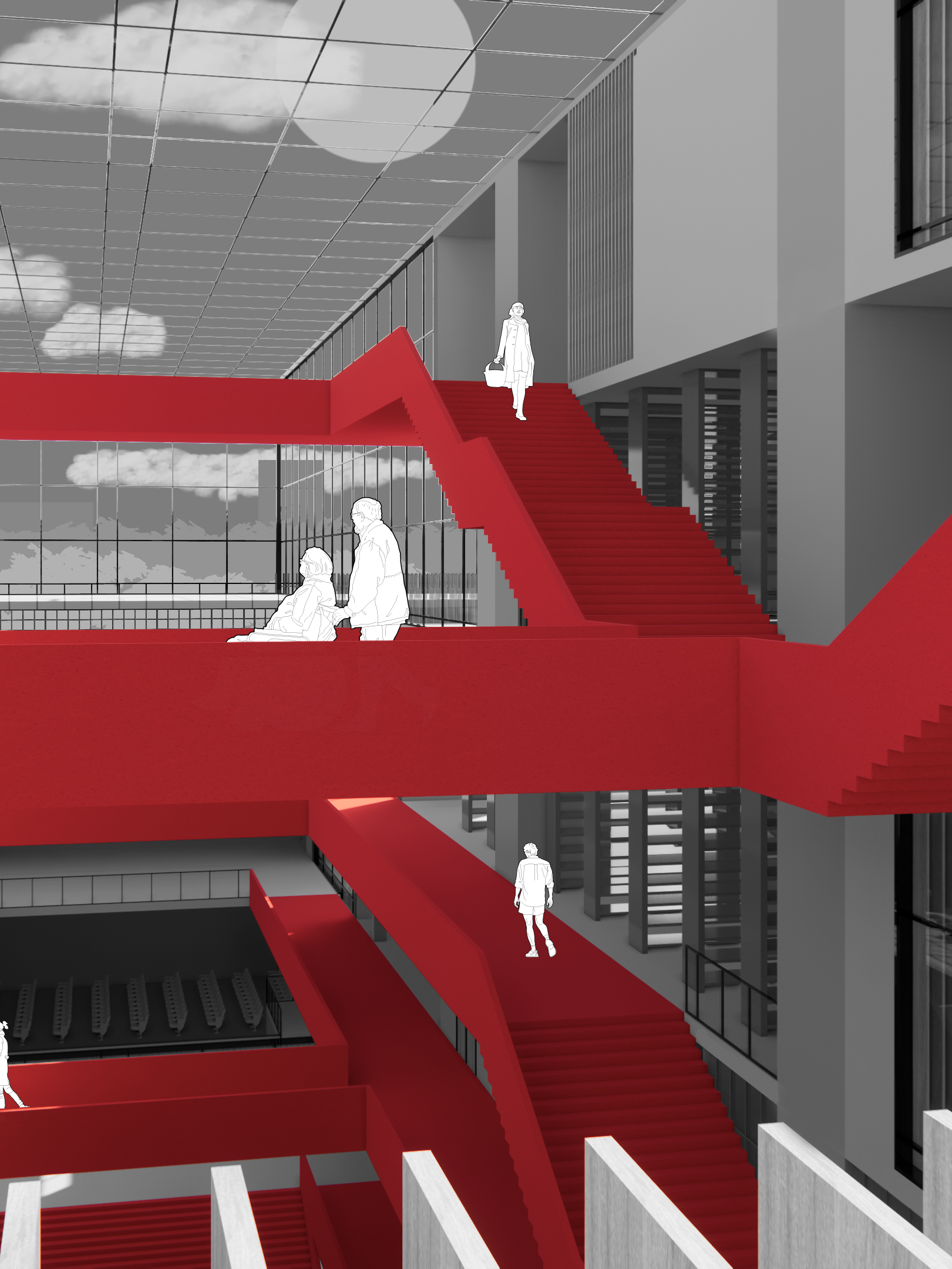As a result of the 2009 earthquake in the Abruzzo region, the city of L’Aquila was struck. Sitting on a basin sediment structure, the destructive effects of the earth were amplified even more. The earthquake rated with a 6.5 on the Richter magnitude scale destroyed many buildings within the historical village and cost many people their homes and lives. One of these buildings was the church named Santa Maria del Suffragio, also known under the name “Chiesa delle Anime Sante.” After the destruction of the earthquake, the dome became a national symbol of the tragic event, but also a sign of hope for the reconstruction of the region. The church has undertaken various forms over its history and was constructed in 1713. Later in 1805, the dome in Neoclassical style was added to the church. The dome was designed by the architect Guiseppe Valdier and sees the implementation of classical orders, symmetrical shapes, and the division with a cupola and a drum with fenestrations.
The goal for this project was to generate a temporary computational clay protostructure within the historical setting, which focuses on the design and interaction of light within the space. This lighting design is based on site-specific computational parameters, respecting the historical site with this contemporary injection into the site. The site should honour the suffrage of its location and finds its basis in theological symbolism. This basis comes from the symbols used in the church as a whole. The dome especially sees the use of roses and lilies, as well as the application of a white dove on the ceiling of the lantern. All symbols are connected to the suffrage, initially intended with the construction of the main dome.
With the application of the computational clay protostructure, taking into account this symbolism is key to making an application that respects its context. Therefore, the goal was to heal the inner surface of the dome whilst using the appropriate symbols. Looking into the vast collection of Christian theological symbols, the willow seems most fitting. It is used to represent mourning and sorrow. This symbolizes the mourning for the loss that has been suffered due to the earthquake. This is abstracted to fit the contemporary nature of the intervention, using appropriate expressions for the tectonics that clay printing brings. The willow is abstracted into an experience, where the draping light effect of the surface under a willow is the basis for the computational design. This effect is obtained through the translation of the density of the sediment layers into a horizontal line pattern and the force flow lines generated from the missing surface of the dome. This is possible because, in a normal complete dome, the forces work perfectly and regularly. In our case, with the irregular, broken shape, these forces will not be predictable.
The opening that is left from the lantern will be treated as an oculus resembling the presence of the Holy Spirit. Where this symbol is missing now, with the partial collapse of the dome. Translating this into appropriate tectonics, the Holy Spirit is exemplified by the pattern of tiles pointing to the middle of the opening. Connecting to the standard theological symbolism in an abstract form. In the end, the design sees this conceptual and theoretical design being translated into a computational architectural language through Grasshopper and Rhino. These two parts of the design can be found at the bottom of the page.
with special thanks to my collaborators; Tom van Well, Janne Heijnen, Floortje Arnts and Xiang Li



THEORETICAL FRAMEWORK
Taking into account the theoretical framework as discussed above, three main pillars can be derived as the starting point of the design. Two of these are a direct consequence of the earthquake that happened in l’Aquila; the earthquake itself and the missing part of the dome that is to be healed. Furthermore, to inform the design further, a standpoint within theological symbolism was taken, making it fit for its contemporary application.
To start off, the closing part of the dome abstracts the symbol of godly presence into the form of an oculus. Where it would have been easy to print the geometry of the dove on the keystone, this would not be honest in nature for the parametrically driven design. Therefore, the symbol itself, godly presence, is translated into light. The focus of this light comes from the surrounding tiles pointing its lines to the centre. The lines are generated through the stacking of layers, which will be explained further in the catalogue. The experience of being under a willow and the shadows that are generated are the driving forces for the largest surface area of the design. This effect is generated by stacking various layers on top of each other, all parametrically generated as a result of different methods.
To get to the final shading of the pattern, the sediment layers of the earlier mentioned basin have been translated into various densities of lines to generate a variation in shading levels as a result. These horizontal lines will be supported by a different layer, making them able to “droop.” This was done for two reasons; First of all, the drooping results in a non-uniform texture that is more reminiscent of the irregular shading pattern that was sought after in the design. Secondly, the drooping results in more rounded geometries within the pattern, leading to shadows that appear more naturally. This second layer, supporting these “sediment layers” are the force flow lines derived from the missing surface of the dome itself.
Combining these two layers results in the play of light and shadow that mimics that of standing under the earlier described willow. This willow is rendered through computational design that has its roots in its past and context, being a site-specific implementation.
COMPUTATIONAL PROGRAMMING
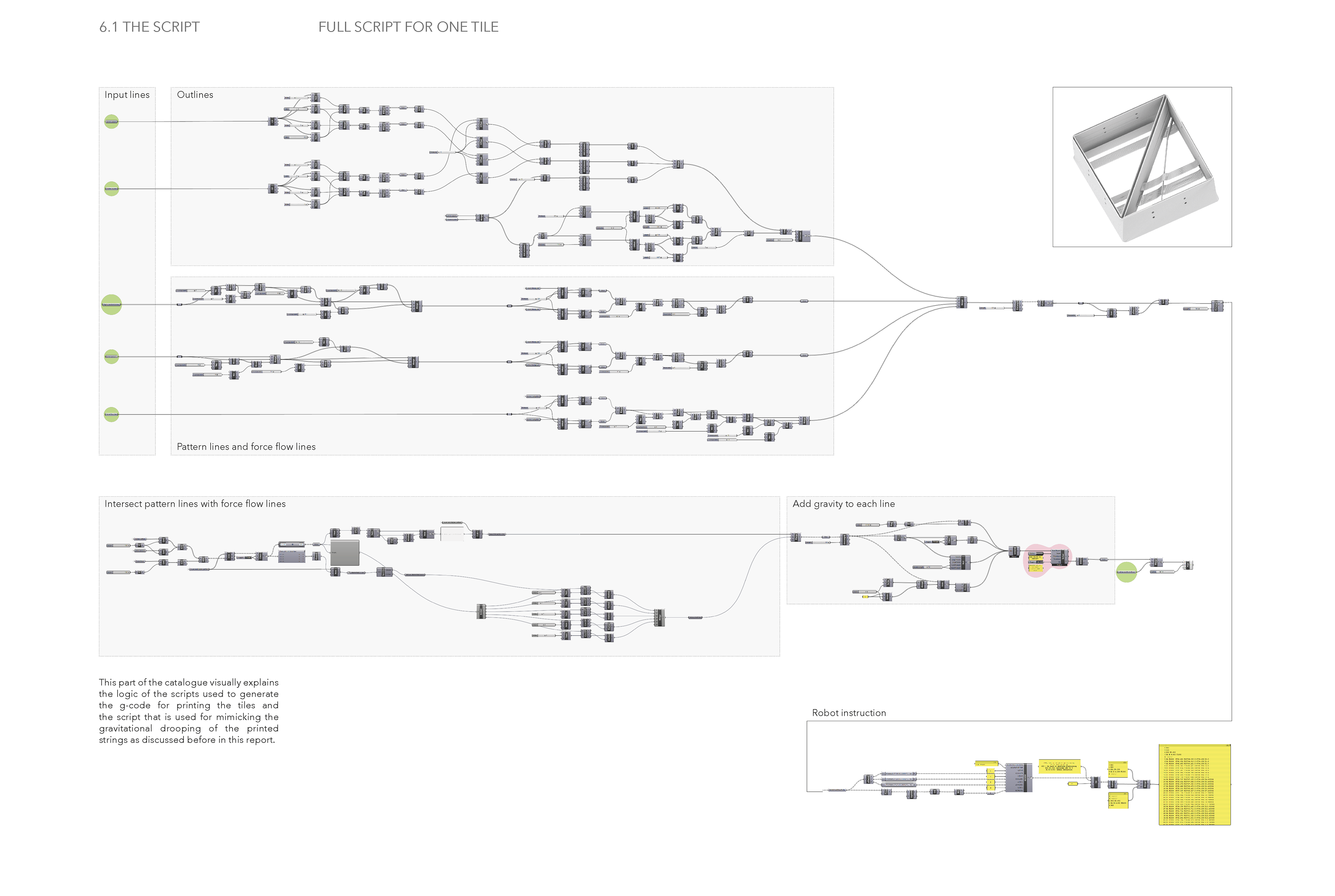





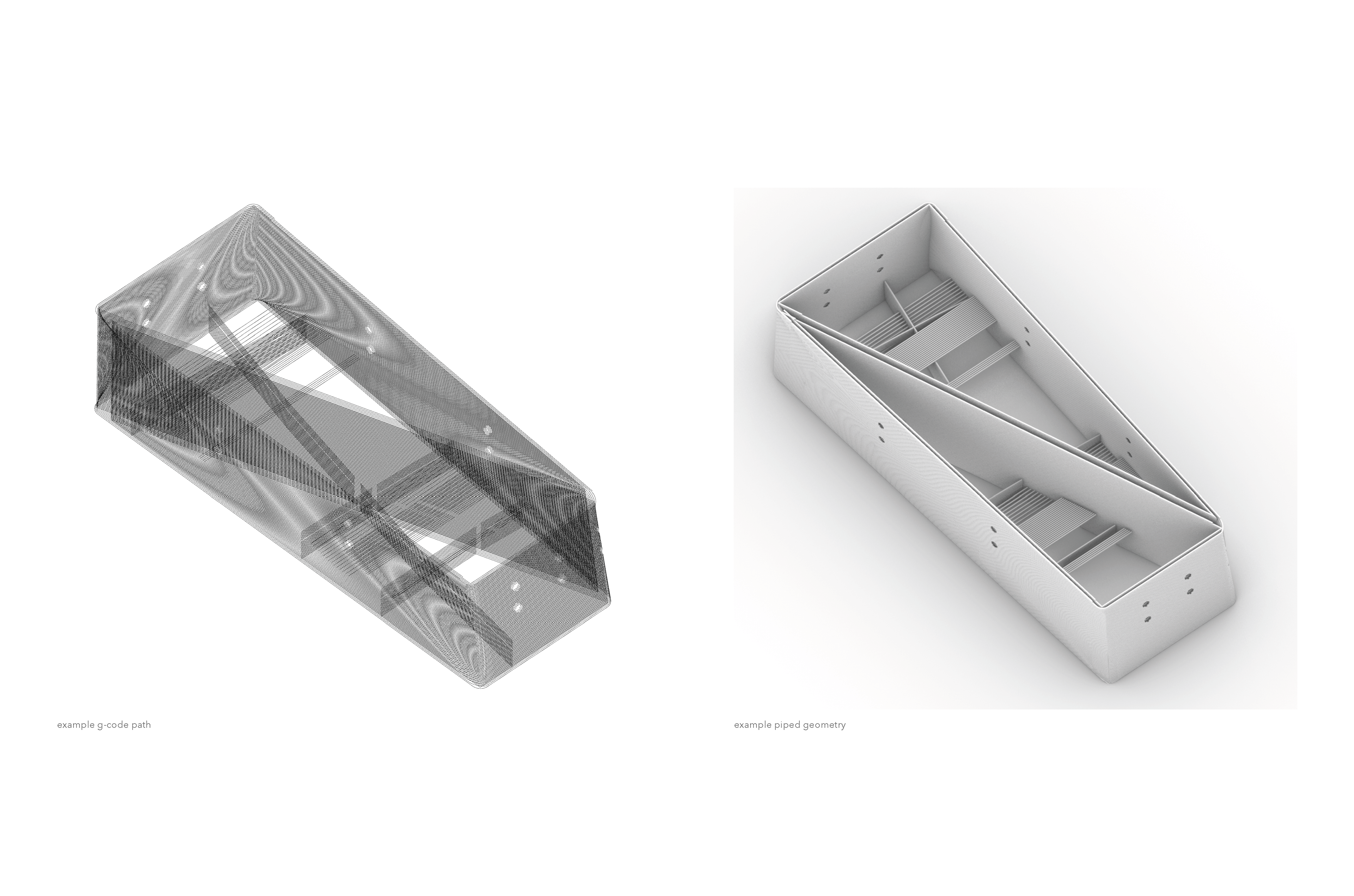
CLAY PRINTING EXPERIMENTS







